How fabric and Headless Commerce Helped GNC Achieve the Impossible
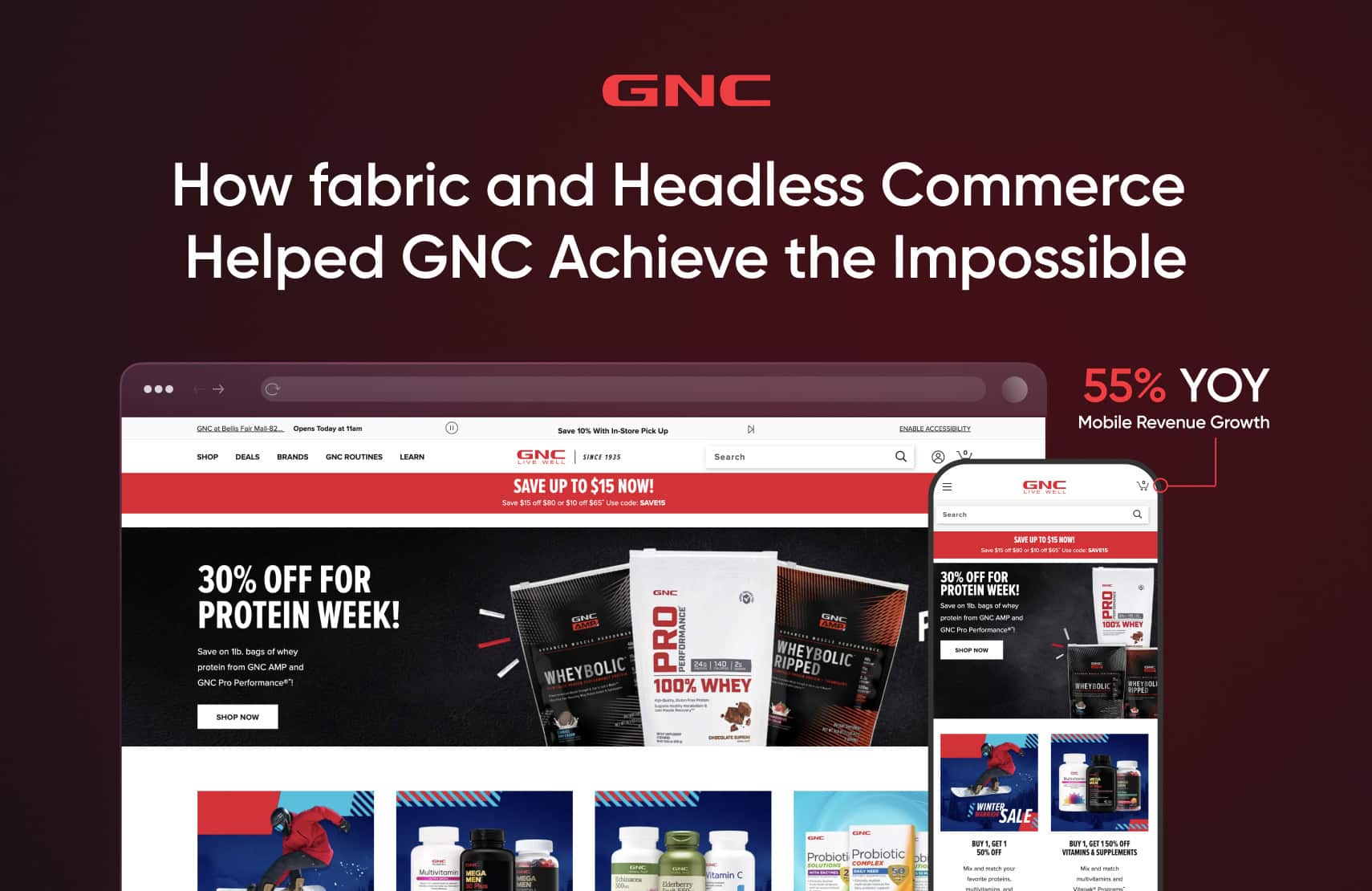
GNC’s original mobile e-commerce app was highly customized, slow to progress, and built in an unsustainable coding language to meet its needs and serve its consumers adequately.
GNC required a replacement app with a full suite of features and the ability to scale alongside the brand’s other e-commerce initiatives but had a tight time to release.
To meet GNC’s strict deadline, fabric negotiated a phased release schedule, starting with core feature parity based on a headless e-commerce architecture, helping GNC meet its aggressive release date.
The new GNC app, powered by fabric XM and e-commerce APIs, launched on time, with the ability for fabric to implement additional iterations over time, helping GNC grow the active user count, improve its app store ratings, and increase revenue by 55%.
GNC first began in 1935 as a small health food store run by David Shakarian in Pittsburgh, PA. Shakarian sought to capitalize on the growing health food fad by filling the niche, eventually finding enough success to open a chain of stores throughout the Pittsburgh region where the company remains headquartered today.
The desire for healthy products entered the mainstream zeitgeist in the 1960s. To meet increasing demand, Shakarian rebranded the company to General Nutrition Centers and opened the first GNC locations outside of Pennsylvania. Over time, GNC became a household name, offering products that included healthy foods and beverages, cosmetics, vitamins, and supplements.
In other words, GNC carved out its place in the nascent wellness market, which McKinsey estimates at $1.5 trillion with an annual growth of 5-10% — growth driven, in part, by increasing consumer focus on health and wellbeing. In North America specifically, the healthy eating, nutrition, and weight loss sector grew by 7.9% between 2019 and 2020.
To stay competitive in a growing market, GNC has had to evolve beyond its storied brick-and-mortar history. And maintaining an e-commerce website isn’t enough in and of itself: this year, more consumers will buy more on mobile than they will on desktop or laptop devices.
Embracing a more mobile-friendly e-commerce strategy lets GNC capitalize on its past successes while maintaining its place as a strong competitor in the health and wellness space.
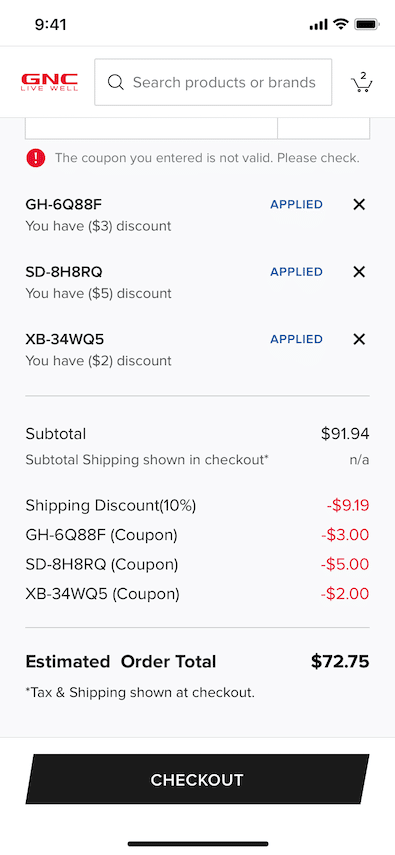
[toc-embed headline=”How GNC Remains Competitive in the Health and Wellness Industry”]
How GNC Remains Competitive in the Health and Wellness Industry
Over the decades it’s been in business, GNC nurtured a loyal customer base. However, to avoid typical retail struggles, GNC implemented plans to appeal to a broader demographic by:
- Engaging with a wider swathe of age groups, including young fitness-oriented customers and baby boomers
- Better appealing to female consumers
- Expanding its product assortment and prioritizing products with increased quality and efficacy
- Making its retail GNC store environment less aggressive and more approachable
GNC also continued to build upon its loyalty programs to increase engagement and spending. Personalizing the customer experience through the use of technology like digital receipts further enabled GNC to improve customer loyalty and drive value.
In fact, the importance of personalization led GNC to deploy the e-Spirit FirstSpirit digital experience platform and a hybrid headless CMS. This combination lets GNC use AI to generate personalized content across all customer touchpoints, improving the customer experience without needing ongoing developer support.
GNC’s versatile omnichannel approach enabled the business to continue to progress during the COVID-19 pandemic. Just before the start of the pandemic, GNC launched a new e-commerce website. This online storefront helped GNC collect valuable insights about customer behavior, which it used to improve the customer experience as shoppers shifted entirely to digital sales channels.
These initiatives helped inspire a rebranding — one intended to rely heavily upon GNC’s existing customer base.
[toc-embed headline=”GNC Recognizes the Potential of Mobile E-Commerce”]
GNC Recognizes the Potential of Mobile E-Commerce
E-commerce is changing. For brands to succeed, they need to prioritize the customer experience.
GNC adopted this mindset when embracing mobile e-commerce, outlining plans to revamp its technology to better benefit both its existing customers and expand into a wider market.
Implementing “action focused on delighting customers” could help GNC compete with its competitors and maintain — or improve — its growth rate.
GNC’s strategy for pivoting to mobile e-commerce included:
- Developing a self-sufficient one-stop-shop that answered its customers’ needs
- Offering a holistic service that encompasses the entirety of health and wellness
- Expanding product lines to include a wider assortment of health and wellness goods
- Improving the mobile shopping experience beyond a mobile website
- Driving customer journeys through app-only functionalities to enhance control over the customer experience
- A flexible solution for improving omnichannel marketing and support
Such an ambitious approach to developing a mobile app could set GNC apart from its competitors and drive growth at a time when consumers were becoming increasingly conscious of their health and wellness.
On the flip side, failing to meet these goals could drastically increase the total cost of ownership of GNC’s mobile app.
[toc-embed headline=”How fabric Helped GNC Create a Mobile E-Commerce App”]
How fabric Helped GNC Create a Mobile E-Commerce App
GNC originally partnered with a systems integrator to develop the first iteration of its mobile app. However, this process resulted in significant expenses and technical debt, producing a product that was slow to progress, unsustainable coding language, and required significant resources.
To resolve its mobile app woes, GNC began exploring alternatives. Its contract with the developer of its mobile app was set to expire at the start of October 2021, so GNC began evaluating three options, including Flutter (which uses an open-source framework from Google), before discovering fabric in June.
Initially, GNC sought to have a replacement app go live in October, though this time frame seemed impossible. However, the pieces began to fall into place as fabric consulted with GNC. The fabric team took GNC’s concerns and goals into account to outline a minimum viable product (MVP), which could be released by October.
fabric planned to build upon the existing codebase from GNC’s mobile app. Reusing code and tapping into resources available from the vast React community meant fabric could develop a future-proofed app with the ability to scale alongside future changes to the GNC website, including the option to integrate new technologies like:
- Telehealth
- Routines
- Health dashboards
- Integrations with health and fitness devices
Additionally, leveraging fabric XM provided the flexible capabilities necessary to support both web and mobile e-commerce.
The initial estimate for the app’s time to market was about eight months — four months past GNC’s October requirement. But after more consultations and planning, fabric realized it could trim the time to market by integrating GNC’s existing systems and repurposing code.
Executing this strategy meant fabric could develop a brand new mobile app with the versatility required to quickly and efficiently react to consumer feedback. At the same time, the GNC app would deliver a seamless customer experience across multiple platforms while reflecting identical branding and tones.
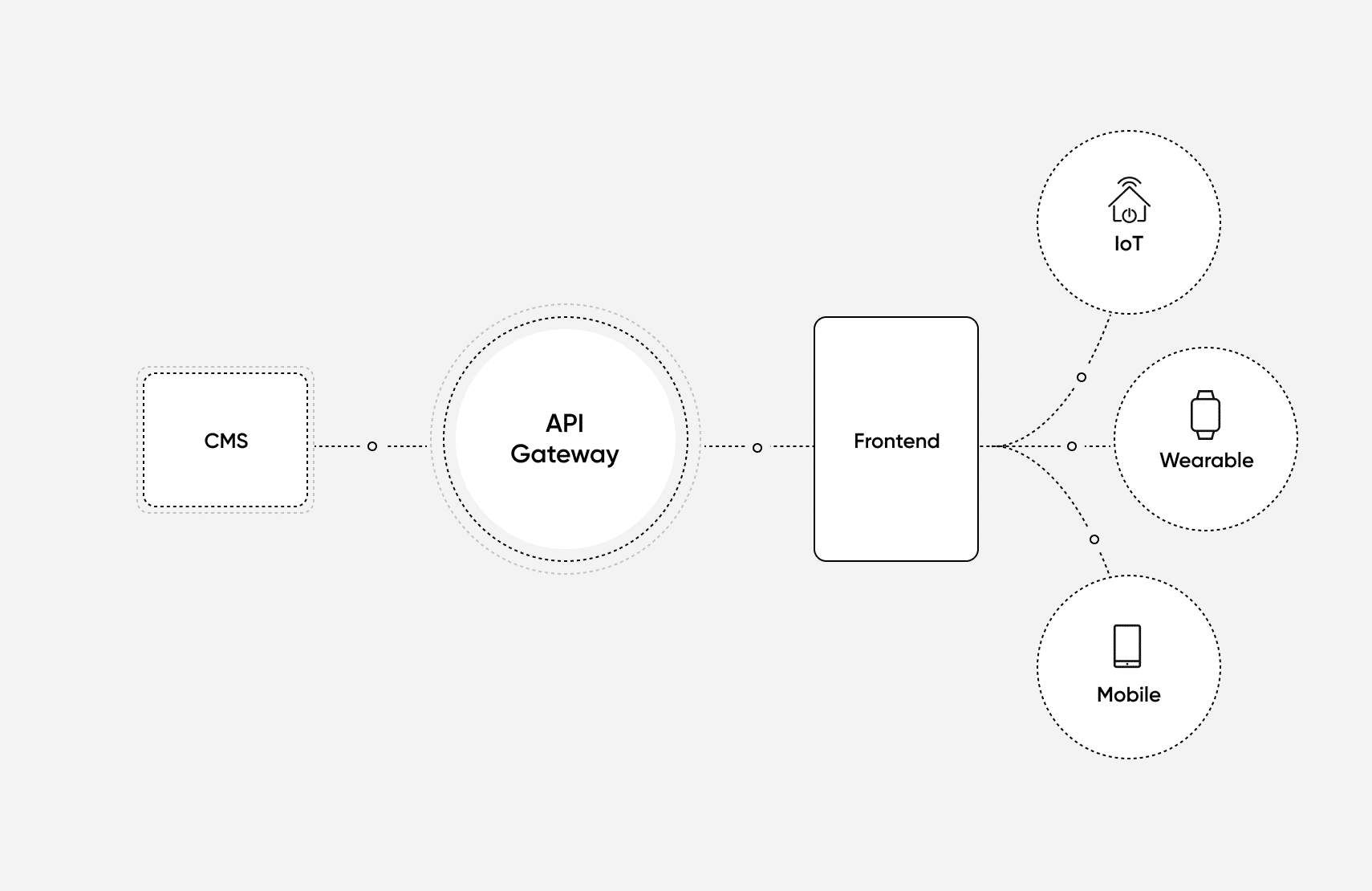
How a headless architecture enables seamless integration between different components. Though elements of the backend can change, the frontend — what’s visible to the customer or end-user — provides the same experience across devices and touchpoints.
[toc-embed headline=”GNC and fabric’s 12-Week Journey from Impossible to MVP”]
GNC and fabric’s 12-Week Journey from Impossible to MVP
fabric began developing the GNC mobile e-commerce app on June 4. On October 4, it went live. In all, fabric took just 12 weeks to develop a fully-functional app.
So how did fabric achieve the impossible? To meet GNC’s strict deadline, fabric understood it needed to contextualize and define the MVP. Multiple collaborative fabric teams came together to contribute and collaborate, mimicking the concept of crowdsourcing and enabling different pieces to come together at the same time.
Ultimately, fabric built the app using three components:
- The GNC storefront, built using fabric Storefront
- fabric XM
- Middleware
fabric XM lets the GNC business team push daily updates on the UI. These typically amounted to 4 to 5 daily updates and flash sales, highlighting promotions and marketing initiatives, typically on the GNC homepage and other sales channels.
This was further supported by the middleware, which seamlessly connected to the backend and served as an orchestration layer.
From there, added functionality came via integrations with other apps and APIs, including:
- enVista OMS
- Ordergroove for subscription management
- Epsilon for a loyalty program
- Location services
- Payment processors
- Fraud prevention
But fabric — and GNC — also needed a way to measure the performance of all these integrations and the app as a whole. To accomplish this, fabric implemented Datadog, which provided both teams with real-time analytics that included:
- Number of active users
- Registrations
- Trends
- Bounce rate
- Cart abandonment rate
These metrics, combined with feedback from both GNC and its customers, helped outline changes and improvements to the app. In other words, fabric could iterate upon the MVP to add additional functionality and features that would have made the original October release date impossible to meet.
It also gave fabric more time to build upon or replace those GNC services that weren’t up to par for integration with fabric’s tech stack.
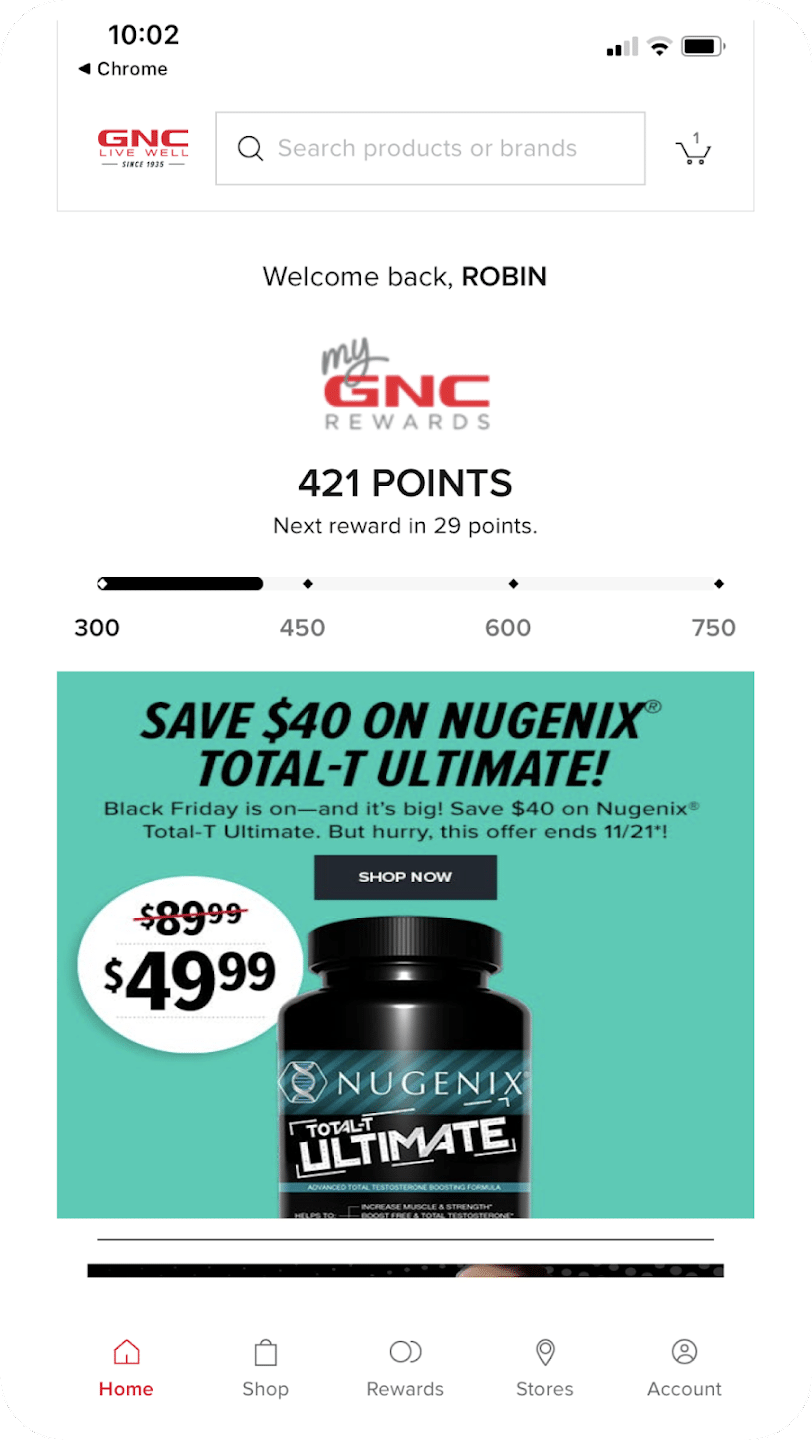
A screenshot of the GNC mobile app demonstrating personalization elements, loyalty rewards, and current sales.
The results of GNC’s collaboration with fabric
GNC’s mobile app required five additional app releases after the initial October launch. Each new release iterated upon the MVP to expand features and improve functionality. These updates included improvements to the app itself as well as the inclusion of more payment processors, like Apple Pay and PayPal — the latter of which constitutes 60% of GNC’s e-commerce payment type.
Responding so quickly and thoroughly to feedback from GNC and its customers led to high satisfaction among both groups. The crash rate of the app was reduced by 75% compared to the previous app. Additionally, the Android user base grew to more than 40,000, helping GNC reach and retain a segment of the market it had previously been unable to attract.
Success wasn’t short-lived, either. By January 2022, metrics recorded more than 20,000 concurrent users, with incremental revenue improving by 23% since the launch of the GNC app. Furthermore, GNC saw a mobile revenue YOY increase of 55%.
[toc-embed headline=”GNC Sees 55% Revenue Lift”]
GNC Sees 55% Revenue Lift
An unexpected side effect borne from fabric’s support of the GNC health and wellness app was the idea of packaging the process as a premium service. In many ways, this was necessary: GNC’s seemingly “impossible” time to release necessitated a highly-segmented approach that brought multiple pieces together into one comprehensive and viable product.
At the same time, fabric still had to support and continually iterate upon the GNC app. By packaging this support and development into a premium service, fabric could support GNC over the long haul and often respond to and resolve issues within only 15 to 30 minutes.
This novel approach proved successful. The GNC health and wellness app demonstrates the effectiveness of using a solution- or service-based selling to fuel e-commerce and launch immersive digital experiences. And because the app is built upon headless architecture, GNC — and retailers that follow its example — can quickly scale and improve their app without incurring ever-increasing technical debt.
A pivot to service-based selling — which fabric realized through its process of developing the GNC app — helps drive new and innovative features. It also gives retailers who embrace this model an edge against the competition with a product that exceeds expectations, has a high degree of functionality, and helps the brand expand into a new market while retaining its loyal customer base — as proven with the GNC app.

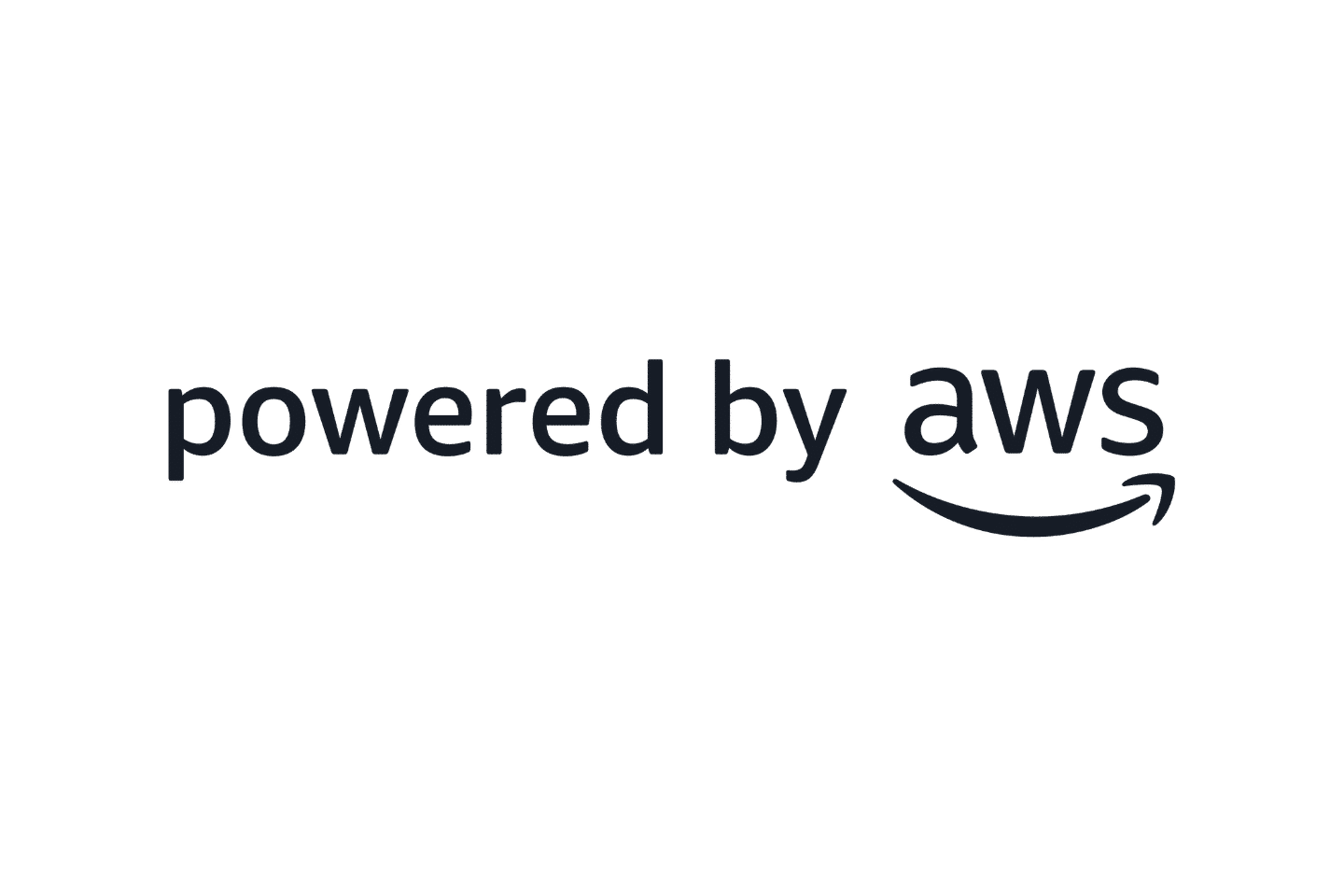

Digital services @ fabric. Previously product manager @ Deloitte.
